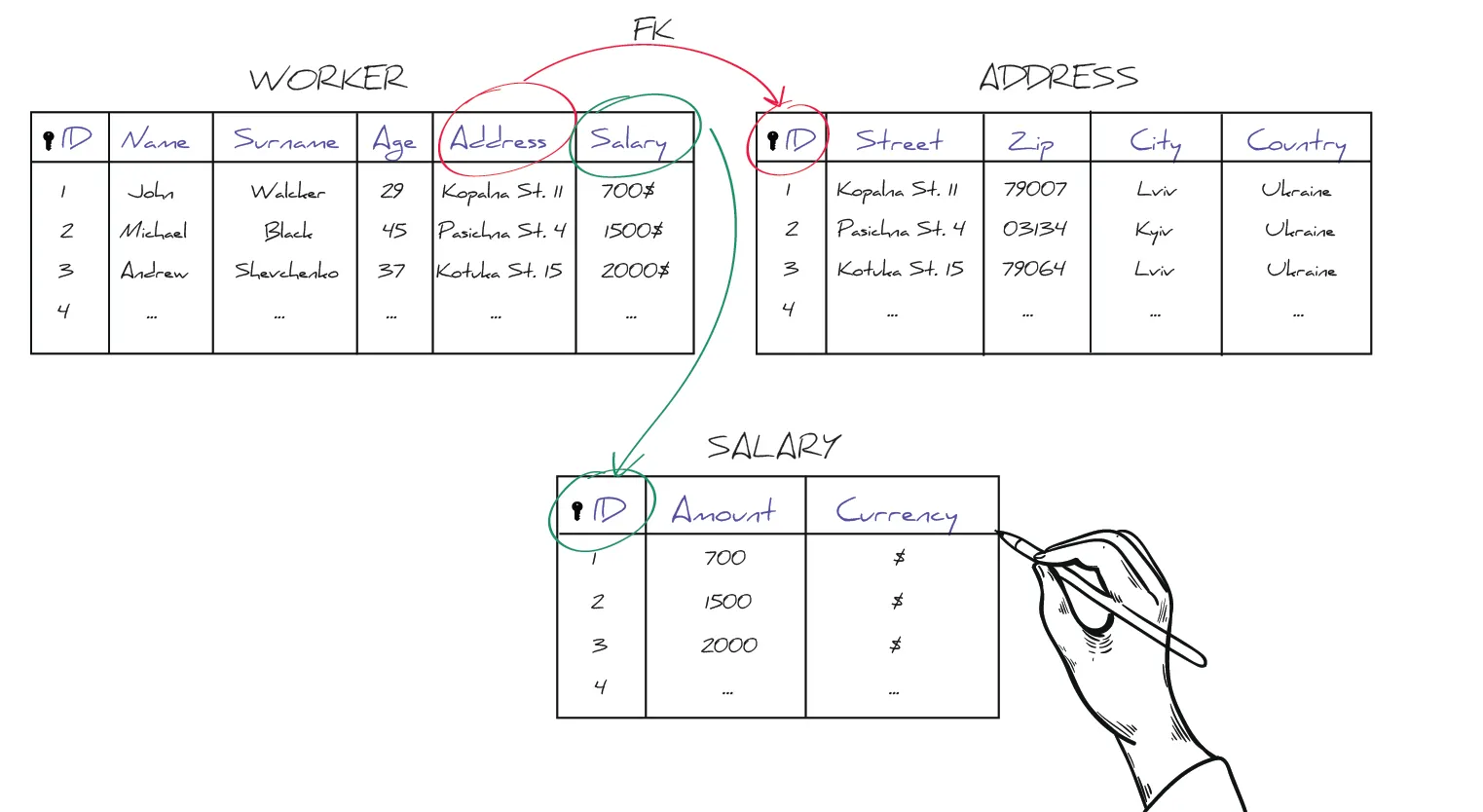Relational vs non-relational databases: advantages and disadvantages
Summarize:
Does a web app need a database? Well, both yes and no. Everything depends on the type of the web app.
Databases aren’t a crucial element. You can build a web app without it. However, this would make it a very basic static website with limited functionality, static content, and lack of customer interaction.
If this doesn’t satisfy your requirements, then you need a web app with a database behind it. This article will help you choose the best one for your project!
What is a database used for?
A database is integral to any dynamic website.
When asking a user to register on your website or subscribe to your blog - their personal information lands in a database. In this case, we’re talking about vulnerable data, such as contact information, so make sure to protect it, otherwise, you risk a leakage. Implement security testing to ensure that sensitive information is stored safely.
If you have ordered e-commerce development services, you have to know that the information for every single listing of an online shop is stored on the database. When a user clicks on an item they are interested in the website requests this data from a database to display it on the screen.
For a social media web app, a database is crucial, since this web app completely relies on user-generated content. Thousands of images and millions of text messages are generated daily - guess where they all land? Of course, in a database, where they are safe and ready to be pulled up at any time.
So, you now understand the true power of a database behind your web app. Now it’s time to review how it works!
Comparison of the two types of databases
You can store your data in two ways:
Structured - organizing data into rows and columns. As a result, you have a table (or multiple interconnected tables) where all your data is organized and stored clearly.
Document-like - storing all data concerning a person/item in a single document. This means you will have an array of documents, with all types of structured data.
Depending on how you prefer to store your data, you’ll have to make a choice between database type: relational vs. non-relational database.
Introduction to relational databases
A relational database is usually implemented using SQL - the Structured Query Language.
One of the main disadvantages of an SQL database is the need to carefully develop the architecture before adding data. This may be an issue since in some cases it’s difficult to exactly predict data structure and therefore, what type of architecture you have to build. In addition, the data structure can evolve with time, which requires significant changes in the database itself.
Later on, the architecture will need to be optimized, which is a complicated and, in most cases, expensive process.
Despite these drawbacks, the advantages of relational databases make them a preferred choice if your website handles well-structured data. For example, dealing with transactional data is easier with an SQL database, and e-commerce platforms will also profit from the strict structure.

Examples of relational databases:
One of the oldest relational databases, PostgreSQL is still on top. It’s a default for a macOS server but is also available for MS Windows and Linux. It’s reliable, robust and offers exceptional performance, which are the main reasons for its popularity.
This popular relational database is used in various development stacks, such as LAMP (Linux, Apache, MySQL, PHP). MySQL is a universal solution and is compatible with major platforms (Linux, Windows, Mac, BSD, and Solaris). Many tech giants, including Facebook, Twitter, Yahoo!, and YouTube have websites based on MySQL.
An open-source Microsoft database is usually used as a part of the Windows environment. You can choose between multiple editions of the service according to your needs and budget. An SQL Server runs natively with .Net and is a preferred database for Windows-based applications.
Unlike the two previous examples, SQLite is an in-process library. It’s serverless, which means it reads and writes directly to ordinary disk files. The main advantage is its size - an SQLite database can be less than 500 KiB and the response speed is also impressive. Skype, Firefox, Chrome Web browser, iTunes, and many other successful products rely on SQLite.
Selecting a database for your project?
Discuss it with professionals. We analyze your requirements and help you choose the best match!
Non-relational databases
A non-relational, or NoSQL database, works differently. It has to deal with semi-structured data. Each entry fits in a single JSON record. So, a NoSQL database looks like a folder with files rather than a table.
The obvious advantage of a non-relational database is the ability to store and process large amounts of unstructured data.
As a result, it can process ANY type of data without needing to modify the architecture. So, creating and maintaining a NoSQL database is faster and cheaper.
However, there are disadvantages as well. You’ll have to pay for this flexibility with extra processing efforts. Also, administration of a NoSQL database is more complicated. Due to an imprecise data structure, transferring records to strongly typed programming languages becomes a challenge.
When is non-relational database useful? Social media, analytics software - the more various data types the application has to handle, the more obvious the usage of a NoSQL database becomes.

Examples of non-relational databases:
The true leader on the market is an open source database MongoDB. Entries are stored as a BSON document, (a modification of JSON). MongoDB powers Craigslist, eBay, Foursquare, and The New York Times websites. The document-like structure is perfect for handling the thousands of texts and comments these websites store daily.
This is a popular Amazon Web Services product used for storing and processing data. DynamoDB is appreciated for built-in security (encryption of documents) and in-memory caching for faster interactions. Samsung, Netflix, and Lyft are among the prominent users of DynamoDB.
Elasticsearch is a full-text search engine that is also often used as a non-relational database. The benefit of Elastic is the simplicity of its data architecture. Also, the response is much faster when compared to SQL databases.
There are also key-value databases, also known as dictionaries or hash tables. Records in these are retrieved using a unique key that helps locate needed data in the database quickly. Key-value databases are more flexible and lightweight than classical relational ones, allowing them to positively affect web app performance.
Redis is a top key-value database. It supports different types of abstract data structures. Additionally, it’s an in-memory database, storing data in memory instead of storage, which enables faster loading.
Conclusion
The choice between a relational and non-relational database may seem difficult, but actually, all you have to do is define your needs and analyze the advantages and disadvantages of both types.
If you work with well-structured, more or less constant data - an SQL database will be a better choice. It keeps your information organized and will save you storage space. However, if you have to handle various types of data, be ready for challenging database updates and maintenance.
Otherwise, you can decide to use a NoSQL database, which stores all available data as files. Yes, it is less structured, but it takes much less time to create and maintain such a database.
Still in doubt choosing between SQL and No-SQL database?
Why not discuss this with a professional? We provide you with helpful advice absolutely for free
Was this article valuable for you? Then you will definitely enjoy the rest of our blog as well! We explain the most complicated tech concepts with simple words everyone can understand. Join our mailing list not to miss any updates!
You may also like to read

Any questions unanswered?
Let's discuss them
